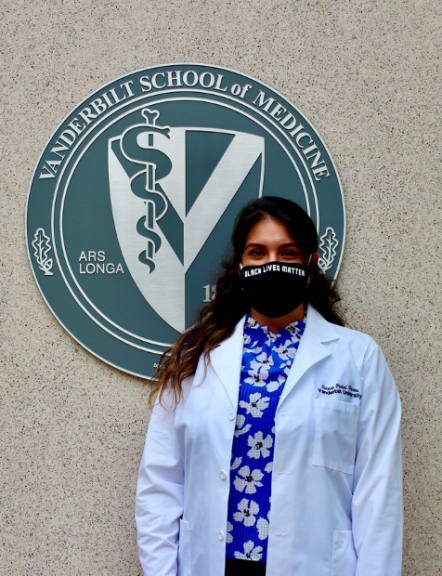In recent years, the human microbiome began to be considered one of the major organs of the human body; it is defined as the collection of all the microorganisms living in symbiosis with the body (Human Microbiome Project, NIH). The microbiome found on and within the human body comprises about one to three percent of the body’s mass and is composed of various communities including, eukaryotes, archaea, bacteria and viruses which outnumber cells in the body due to their miniscule size. As the microbe-host field continues to grow, the literature strongly implicates a link between microbial composition of the microbiome an how it may relate to numerous disease states, as well as giving a growing implication that manipulation of these microbial communities may be a potential avenue for treatment of disease.
Recently, Dr. Grice, an associate professor at the University of Pennsylvania, gave a talk for the VI4 seminar series introducing the skin microbiome as a protective barrier and a source of repair when working together with other host mechanisms of protection like innate and adaptive immune responses. The skin is able to support the growth of microorganisms due to the nutrients that are provided by the sebum released from the sebaceous gland which serves to emolliate our skin. Her research program focuses on understanding the role of the skin microbiome in skin diseases by bringing together culture-independent and culture-based approaches. The Grice lab is interested in understanding the homeostatic roles of the commensal skin microbiota and how alteration influence integrity and function of skin. To answer these questions, she has various ongoing projects in her lab; one of these projects focuses on understanding what genes during skin homeostasis are regulated specifically by the skin microbiome. A graduate student apart of the Grice lab was able to investigate this particular interest further through the use of a gnotobiotic mouse model. Comparing gene regulation of over 700 genes between specific pathogen free and germ-free mice, they were able to observe regulation of certain genes belonging to the epidermis complex. To follow up, a postdoctoral fellow, did a RNAseq study that looked into the gene ontology of the epidermis complex to better understand what pathway were affected by the skin microbiome. Their data revealed that skin and epidermal development as well as keratinocyte differentiation were heavily influenced if not regulated by the skin microbiome. It is important to note that their data was indicative of Currently they have several follow-up projects focusing on understanding what the morphological and functional implications of dysregulated gene expression when the skin microbiome is disrupted.
In 2020 the Grice Lab published an article in the journal Cell Host & Microbe, where they discussed protective factors of the skin microbiome and its role in pathogen colonization resistance against bacterial microorganisms like Staphylococcus aureus. They focus on this specific pathogen because S. aureus is the leading cause for skin and soft tissue infections in the United States. The authors focused on understanding the direct and indirect protective responses provided by the skin microbiome during pathogen invasion. Their data demonstrates the direct protective factors of certain skin microorganisms like Staphylococcus epidermis which are able to produce antimicrobials and tolerate an immune response provide protection against S. aureus invasion of the skin during infection (Flowers and Grice, 2020). In a more indirect way, commensal microorganisms of the skin are able to stimulate host cells into prompting a host immune response (Flowers and Grice, 2020).
I really enjoyed Dr. Grice’s seminar because it provided insight about a part of the body that has huge microbiota implications and often is not thought about. I look forward to what other fascinating results come from her lab and how it may pertain to the role of the skin microbiota in the development of skin cells. As the microbiome field continues to evolve, it is interesting to see how microorganisms may affect key roles in development and protection.
References
- Human Microbiome Project. https://commonfund.nih.gov/hmp. August 2020.
- Flowers L, Grice EA. “Skin microbiota: Roles in barrier maintenance & repair.” VI4 Seminar. January 12, 2021.
- Flowers L, Grice EA. The Skin Microbiota: Balancing Risk and Reward. Cell Host Microbe. 2020 Aug 12;28(2):190-200. doi: 10.1016/j.chom.2020.06.017. PMID: 32791112; PMCID: PMC7444652.
